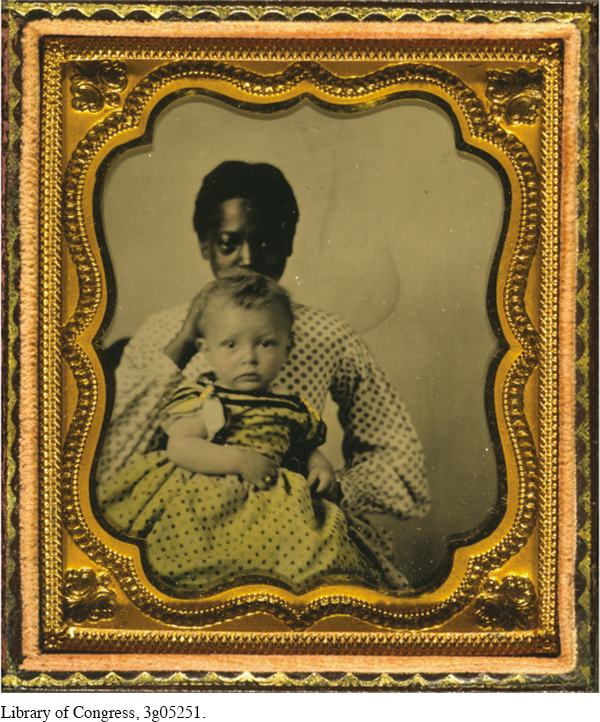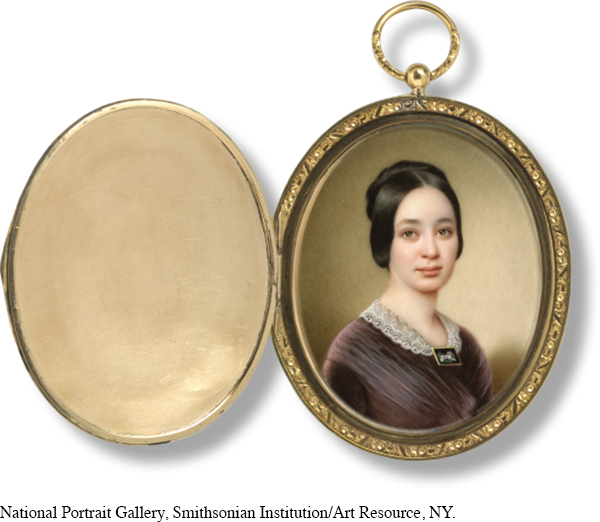The American Promise: Printed Page 359
The American Promise, Value Edition: Printed Page 328
The American Promise: A Concise History: Printed Page 375
The Southern Lady and Feminine Virtues
Like their northern counterparts, southern ladies were expected to possess the feminine virtues of piety, purity, chastity, and obedience within the context of marriage, motherhood, and domesticity. Countless toasts praised the southern lady as the perfect complement to her husband, the commanding patriarch. She was physically weak, “formed only for the less laborious occupations,” and thus dependent on male protection. To gain this protection, she exhibited modesty and delicacy, possessed beauty and grace, and cultivated refinement and charm. The lady, southern men said proudly, was an “ornament.”
Chivalry—the South’s romantic ideal of male-

Daughters of planters confronted chivalry’s demands at an early age. At their private boarding schools, they learned to be southern ladies, reading literature, learning languages, and studying the appropriate drawing-

Proslavery advocates claimed that slavery freed white women from drudgery. Surrounded “by her domestics,” declared Thomas R. Dew, “she ceases to be a mere beast of burden” and “becomes the cheering and animating center of the family circle.” In reality, however, having servants required the plantation mistress to work long hours. She managed the big house, directly supervising sometimes more than a dozen slaves. One slaveholder remembered that his boyhood home had “two cooks, two washer-
The American Promise: Printed Page 359
The American Promise, Value Edition: Printed Page 328
The American Promise: A Concise History: Printed Page 375
Page 362Whereas masters used their status as slaveholders as a springboard into public affairs, mistresses’ lives were circumscribed by the plantation. Masters left when they pleased, but mistresses had heavy responsibilities, and besides they needed chaperones to travel. When they could, they went to church, but women spent most days at home, where they often became lonely. In 1853, Mary Kendall wrote how much she enjoyed her sister’s letter: “For about three weeks I did not have the pleasure of seeing one white female face, there being no white family except our own upon the plantation.”
The American Promise: Printed Page 359
The American Promise, Value Edition: Printed Page 328
The American Promise: A Concise History: Printed Page 375
Page 363As members of slaveholding families, mistresses lived privileged lives. But they also had grounds for discontent. No feature of plantation life generated more anguish among mistresses than miscegenation. Mary Boykin Chesnut of Camden, South Carolina, confided in her diary, “Ours is a monstrous system, a wrong and iniquity. Like the patriarchs of old, our men live all in one house with their wives and their concubines; and the mulattos one sees in every family partly resemble the white children. Any lady is ready to tell you who is the father of all the mulatto children in everybody’s household but her own. Those, she seems to think drop from the clouds.”
But most planters’ wives, including Chesnut, accepted slavery. After all, the privileged life of a mistress rested on slave labor as much as a master’s did. Mistresses enjoyed the rewards of their class and race. But these rewards came at a price. Still, the heaviest burdens of slavery fell not on those who lived in the big house, but on those who toiled to support them.
REVIEW Why did the ideology of paternalism gain currency among planters in the nineteenth century?